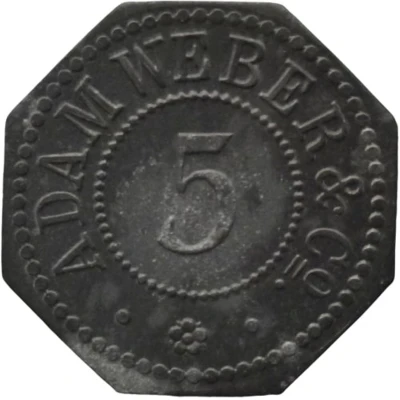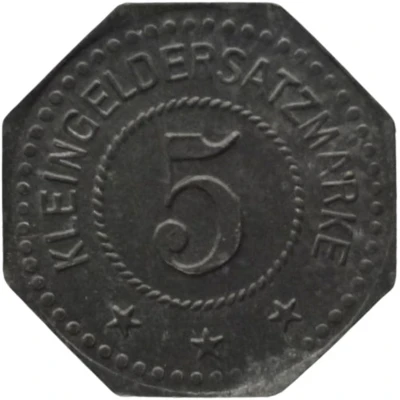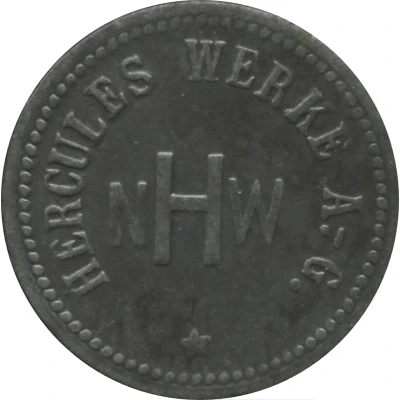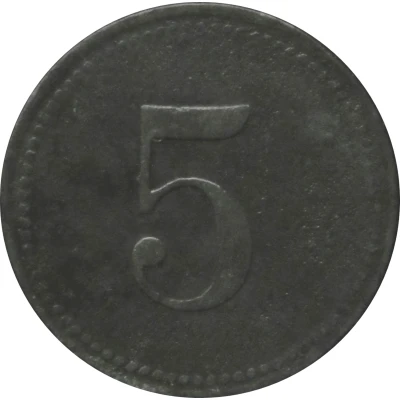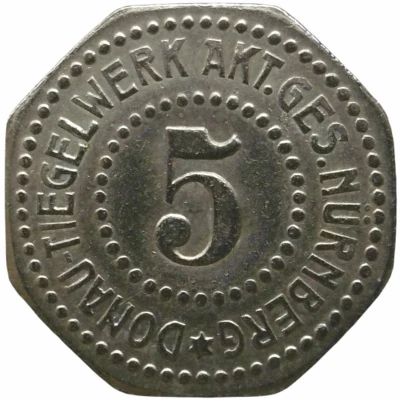
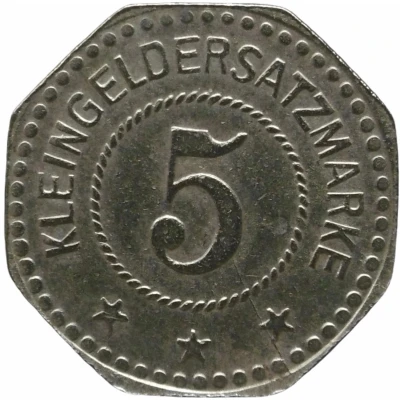

© Willem63 (CC BY-NC-SA)
5 Pfennigs - Nürnberg (Donau Tiegelwerk Akt. Ges.) ND
| Iron | 2.4 g | 19.5 mm |
| Issuer | City of Nuremberg (Federal state of Bavaria) |
|---|---|
| Type | Standard circulation coin |
| Value | 5 Pfennigs (5 Pfennige) (0.05) |
| Currency | Mark (1914-1924) |
| Composition | Iron |
| Weight | 2.4 g |
| Diameter | 19.5 mm |
| Thickness | 1.2 mm |
| Shape | Octagonal (8-sided) |
| Technique | Milled |
| Orientation | Medal alignment ↑↑ |
| Demonetized | Yes |
| Updated | 2024-10-04 |
| Numista | N#285053 |
|---|---|
| Rarity index | 97% |
Reverse
Pearl rim, legend surrounding beaded circle with denomination centered
Script: Latin
Lettering:
KLEINGELDERSATZMARKE
5
★★★
Edge
Plain
Comment
Menzel: BBBInteresting fact
The 5 Pfennigs coin from Nuremberg (Federal state of Bavaria) was made of iron, which was a common material used for coin production in Germany during the early 20th century. However, what makes this coin stand out is that it was produced during a time when Germany was experiencing a severe economic crisis, known as the Great Inflation, which lasted from 1920 to 1923. During this period, the value of the German mark plummeted, and the cost of living skyrocketed. As a result, many Germans turned to alternative forms of currency, such as local emergency currencies like the 5 Pfennigs coin, which was issued by the City of Nuremberg. Despite its small denomination, the coin played an important role in the local economy and was widely used in everyday transactions.
